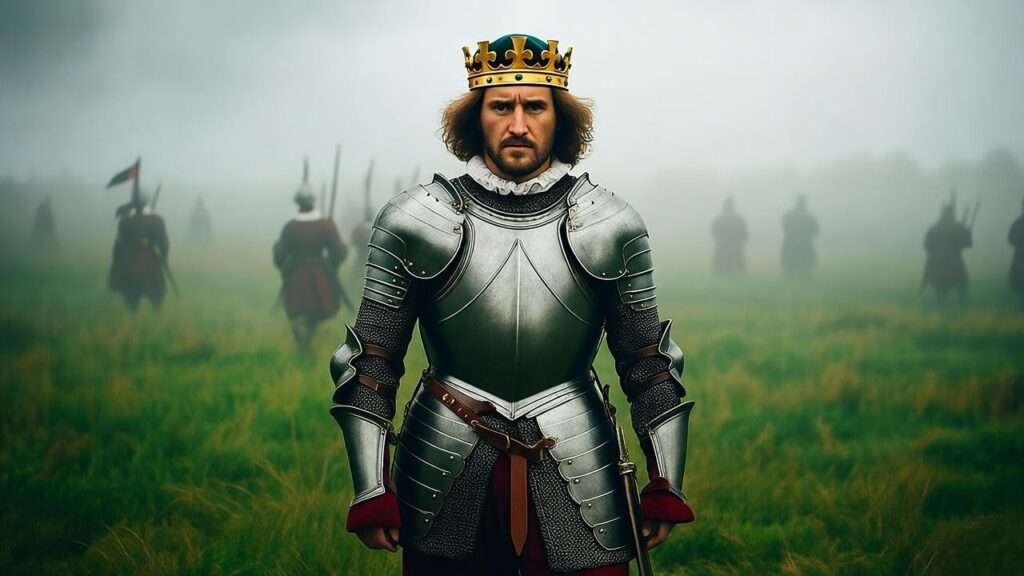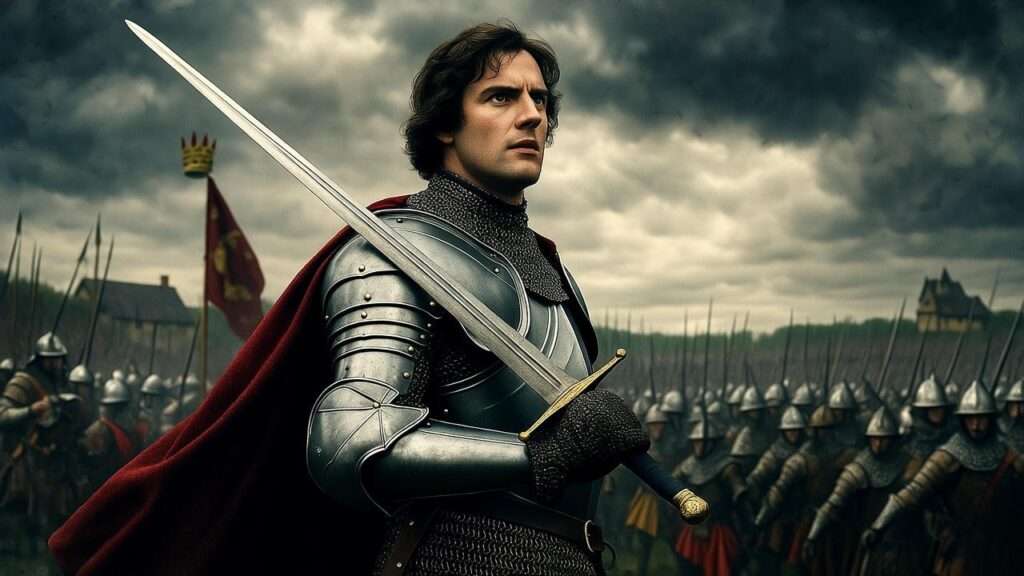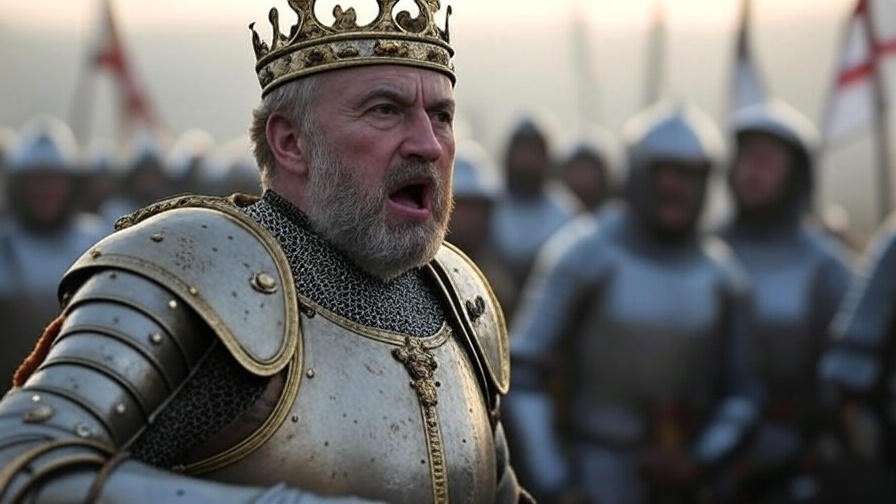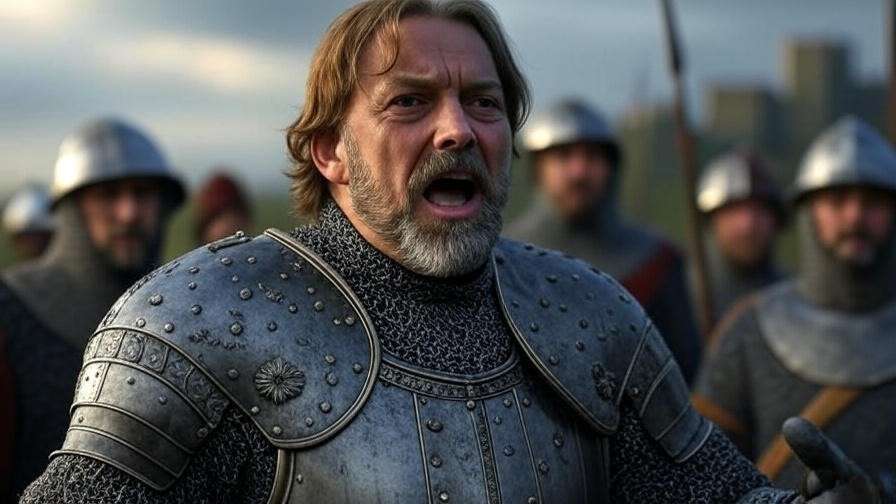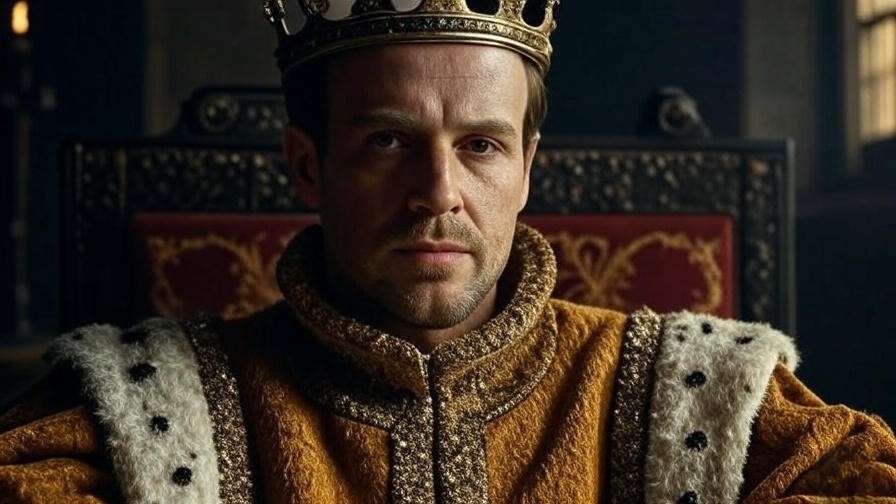Picture a rain-soaked battlefield in 1415, where a young English king stands before his weary, outnumbered troops. With unwavering resolve, he delivers the immortal “St. Crispin’s Day” speech, rallying his “band of brothers” to defy the odds. This is Henry V, William Shakespeare’s masterpiece of leadership, war, and national pride. For students, educators, and Shakespeare enthusiasts seeking a Henry V overview, this article offers a comprehensive guide to the play’s historical roots, gripping plot, complex characters, and enduring lessons. Drawing on Shakespearean scholarship and modern insights, we’ll explore why Henry V remains a powerful study of leadership and humanity, relevant from Elizabethan England to today’s world.
As a scholar of Elizabethan literature with years of experience analyzing Shakespeare’s works, I’ve crafted this guide to illuminate Henry V’s brilliance. Whether you’re a student dissecting the text, a professional seeking leadership inspiration, or a theatergoer captivated by its drama, this Henry V overview will deepen your understanding and appreciation.
Historical Context of Henry V
The Hundred Years’ War and Henry V’s Reign
Henry V, written around 1599, draws on the historical reign of King Henry V of England (1386–1422), a pivotal figure in the Hundred Years’ War (1337–1453). This protracted conflict between England and France centered on territorial claims, particularly over the French throne. Henry’s audacious 1415 campaign, culminating in the Battle of Agincourt, forms the play’s backbone. Historical records, such as those in the Chronicles by Raphael Holinshed, show Henry as a shrewd tactician who transformed a small, under-resourced army into a victorious force against a larger French opponent.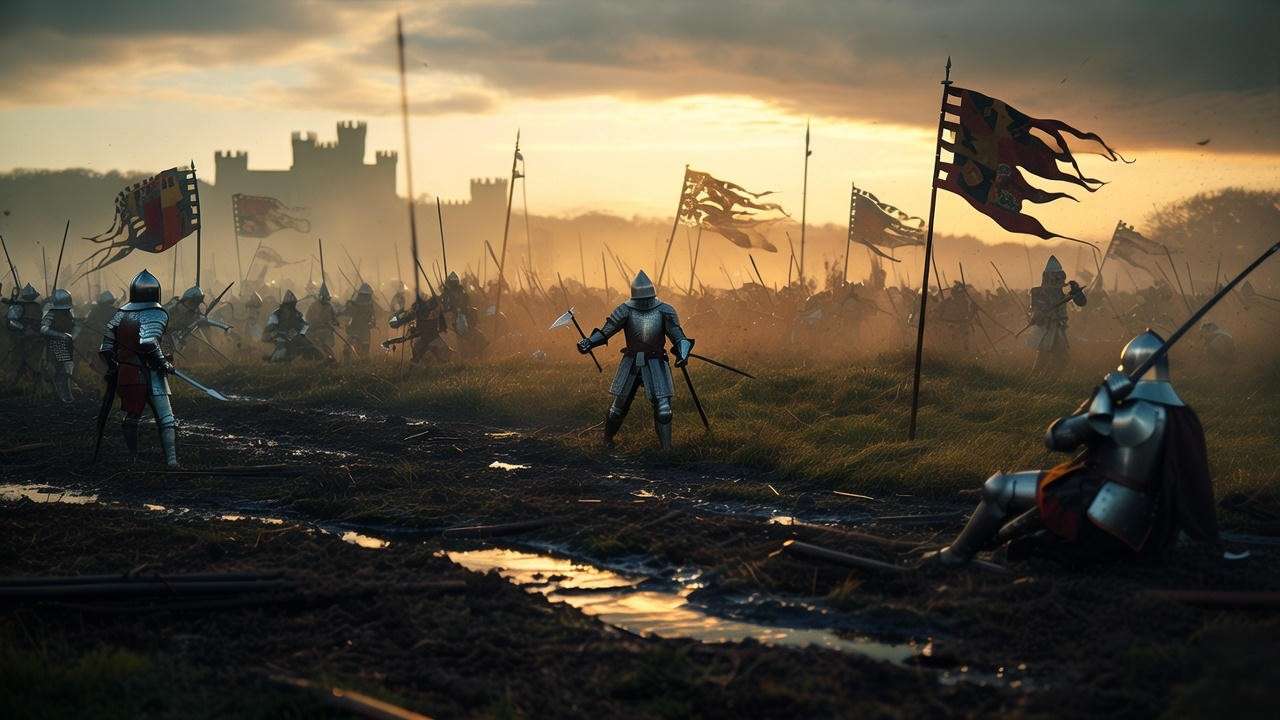
Shakespeare, however, takes creative liberties, blending historical accuracy with dramatic flair. For instance, the play’s Salic Law debate (Act 1, Scene 2) simplifies complex legal arguments to justify Henry’s claim to France. Key figures like Charles VI of France and the Dauphin are portrayed with exaggerated traits to heighten tension, reflecting Shakespeare’s aim to craft a compelling narrative over strict historical fidelity.
Elizabethan England and Shakespeare’s Audience
Performed at the Globe Theatre during Queen Elizabeth I’s reign, Henry V resonated deeply with its audience. England in 1599 faced threats from Spain and internal political strife, making the play’s themes of unity and strong leadership timely. The Chorus’s opening lines, invoking a “muse of fire,” set a patriotic tone, appealing to Elizabethan pride in England’s military past. Shakespeare’s depiction of Henry as an ideal monarch mirrored Elizabeth’s image as a unifying ruler, reinforcing national identity.
The Globe’s diverse audience—nobles, merchants, and commoners—found Henry V accessible yet profound. Its blend of rousing speeches and gritty soldier banter spoke to all social strata, cementing its cultural impact. Today, scholars like Emma Smith highlight how the play’s patriotic fervor reflects Elizabethan anxieties about succession and foreign threats, offering a lens into its original reception.
Plot Summary of Henry V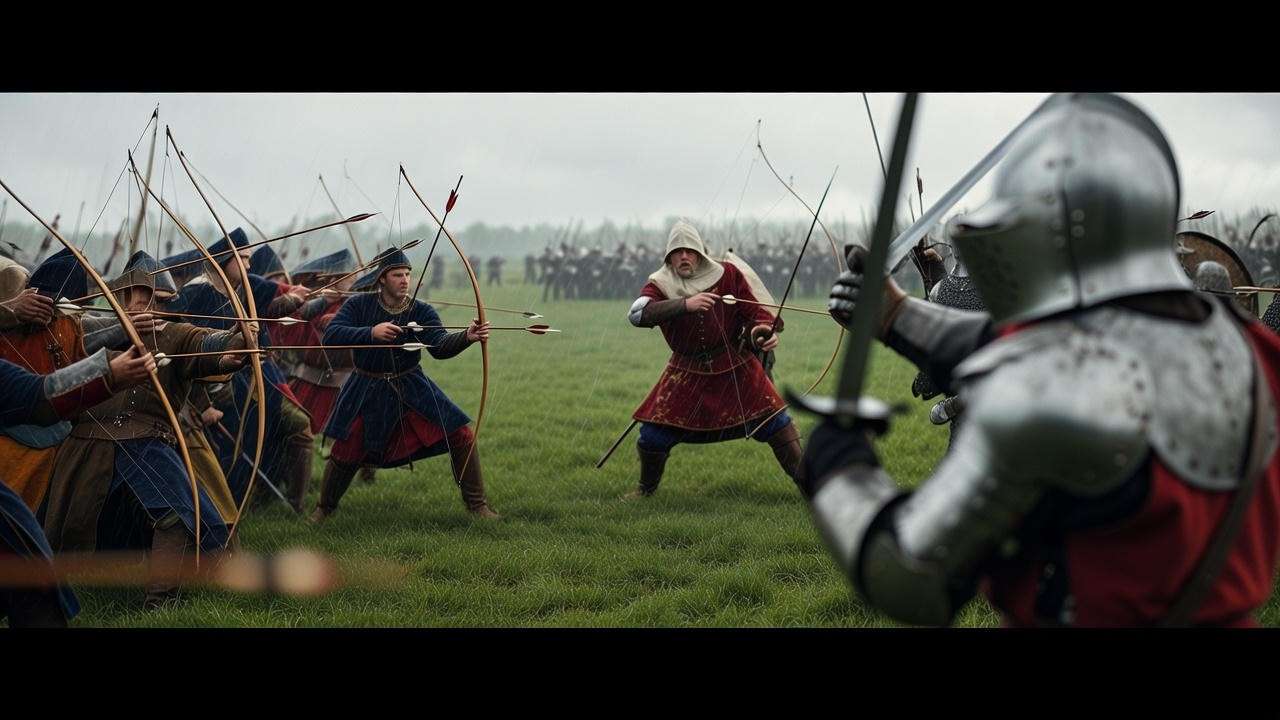
Act-by-Act Breakdown
Henry V unfolds across five acts, tracing England’s campaign in France and Henry’s growth as a leader. Here’s a concise breakdown:
- Act 1: Henry, advised by his clergy, invokes the Salic Law to justify war with France. Ambassadors from the Dauphin deliver a mocking gift of tennis balls, prompting Henry’s resolve to invade.
- Act 2: A conspiracy by Cambridge, Scroop, and Grey threatens Henry’s life but is swiftly uncovered. Preparations for war intensify, with comic interludes from lowborn soldiers like Pistol and Bardolph.
- Act 3: The English besiege Harfleur, where Henry delivers the stirring “Once more unto the breach” speech. The French counterattack falters, and Henry’s army, weakened by disease, faces daunting odds.
- Act 4: On the eve of Agincourt, Henry disguises himself to mingle with his troops, grappling with the burdens of kingship. His “St. Crispin’s Day” speech galvanizes the army, leading to a miraculous victory against a superior French force.
- Act 5: The Treaty of Troyes secures peace, with Henry wooing Princess Katherine in a charming, if politically motivated, courtship. The Chorus foreshadows future strife, hinting at the fragility of Henry’s triumphs.
Key Turning Points and Climaxes
The play’s narrative hinges on Henry’s transformation from the wayward Prince Hal of Henry IV to a decisive king. The betrayal in Act 2 tests his resolve, while the Agincourt victory in Act 4 showcases his strategic genius. The “St. Crispin’s Day” speech (Act 4, Scene 3) is the emotional climax, uniting the army and audience in a shared sense of purpose. Shakespeare balances war’s brutality with moments of diplomacy and humor, creating a dynamic arc that keeps readers and viewers engaged.
Major Themes in Henry V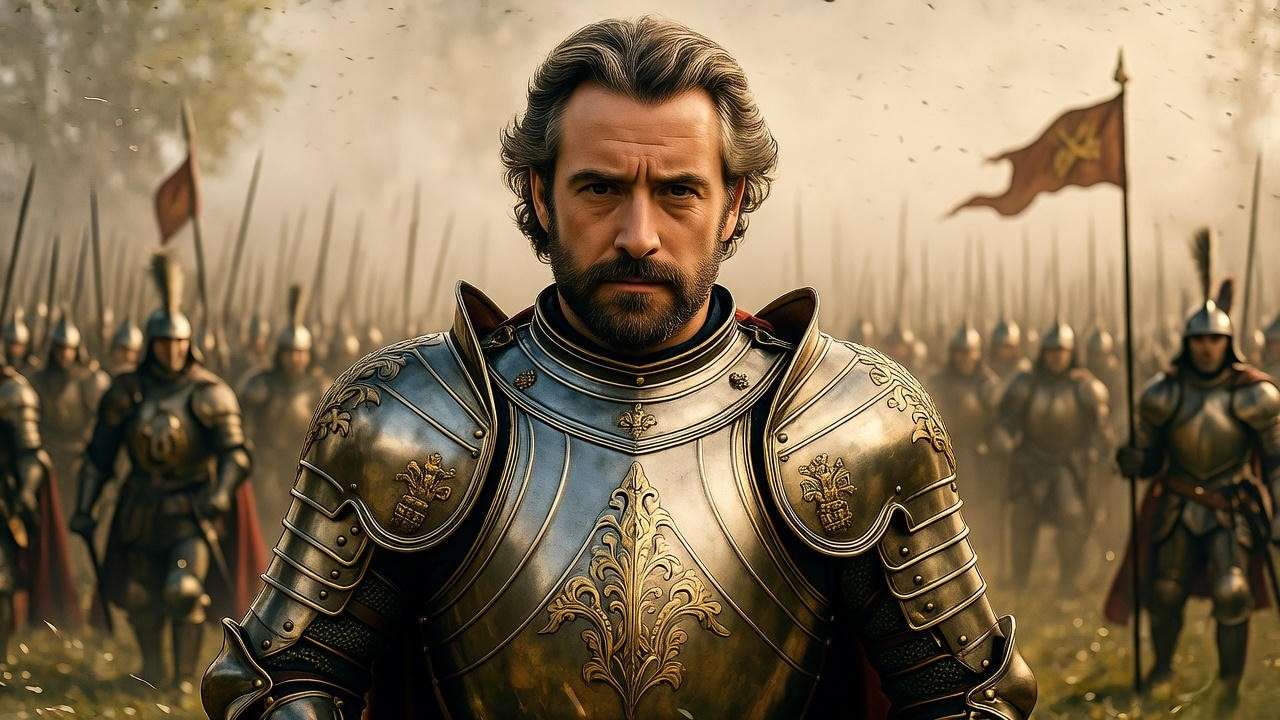
Leadership and Kingship
At its core, Henry V is a study of leadership. Henry embodies charismatic authority, inspiring loyalty through eloquence and action. His “band of brothers” rhetoric fosters unity, a concept echoed in modern leadership theories. For example, John C. Maxwell’s principle of “connecting with people” aligns with Henry’s ability to relate to both nobles and commoners. Yet, the play also probes the moral weight of leadership—Henry’s soliloquy (Act 4, Scene 1) reveals his inner turmoil over the lives lost under his command.
Tip: Leaders today can emulate Henry’s blend of vision and empathy. Practice active listening and clear communication to inspire your team, much like Henry’s motivational speeches.
War and Morality
Shakespeare presents war as both glorious and grim. The victory at Agincourt is celebrated, but scenes of soldiers’ suffering and Henry’s harsh decisions—like ordering the execution of prisoners—highlight war’s moral ambiguity. Characters like Pistol and Bardolph humanize the cost of conflict, showing the toll on ordinary lives. Scholar Stephen Greenblatt notes that Henry V “invites us to question the ethics of conquest,” making it a nuanced commentary on power and responsibility.
National Identity and Unity
The play celebrates English unity while acknowledging diversity through characters like Fluellen (Welsh), Macmorris (Irish), and Jamy (Scottish). Their interactions, often comedic, reflect the challenges of forging a cohesive national identity. In today’s globalized world, Henry V’s exploration of unity amidst diversity resonates, offering insights into cultural integration and collective purpose.
Example: Fluellen’s pride in his Welsh heritage, paired with his loyalty to Henry, mirrors modern discussions of multiculturalism within national frameworks.
Key Characters in Henry V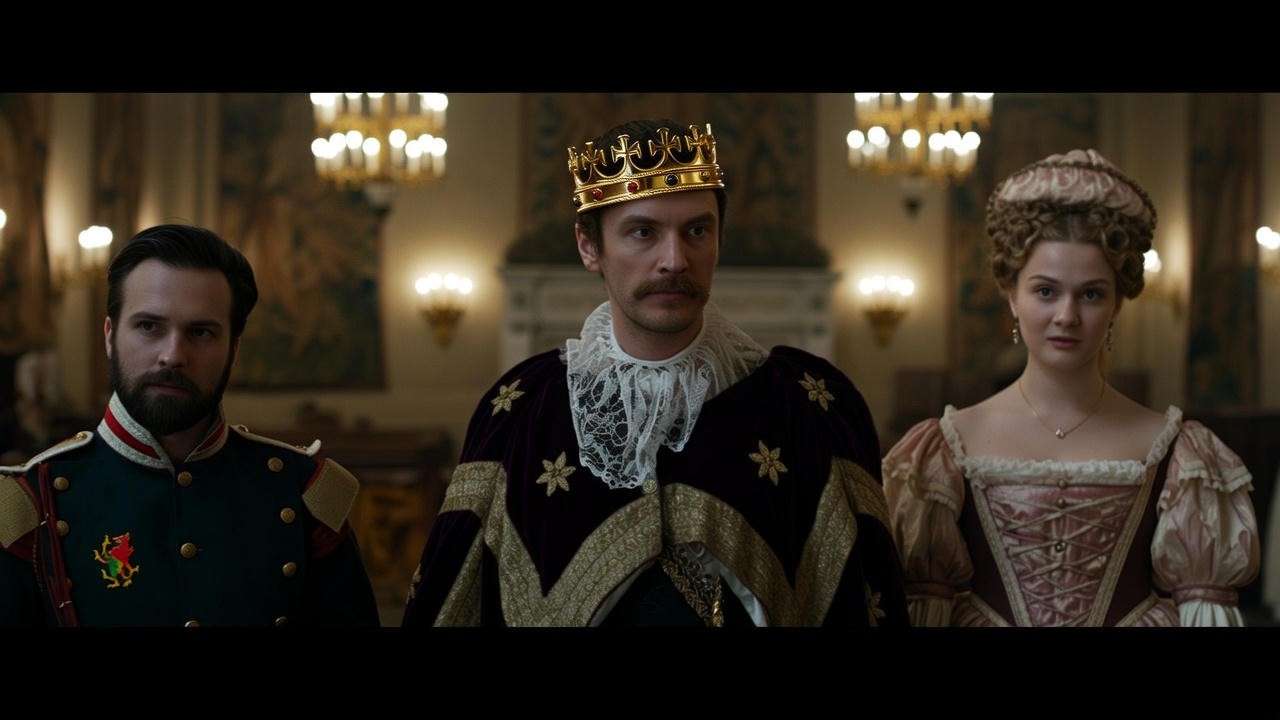
Henry V: From Prince Hal to Heroic King
Henry’s journey from the reckless youth of Henry IV to a revered monarch is central to the play. His charisma, piety, and strategic acumen define him, but his complexity shines in moments of doubt, such as his soliloquy on kingship’s burdens (Act 4, Scene 1): “What infinite heart’s-ease must kings neglect?” This vulnerability humanizes him, making his triumphs more relatable.
Supporting Characters
- The French Court: Charles VI, weakened by illness, and the arrogant Dauphin contrast Henry’s resolve. Princess Katherine’s charm in Act 5 softens the play’s martial tone, highlighting diplomacy’s role.
- English Soldiers: Fluellen’s pedantic loyalty, Pistol’s roguish humor, and Bardolph’s tragic fate add depth to the army’s portrayal.
- The Chorus: Shakespeare’s Chorus guides the audience, apologizing for the stage’s limitations while igniting imagination with vivid descriptions.
Table: Key Characters in Henry V
| Character | Role | Significance |
|---|---|---|
| Henry V | King of England | Embodies leadership, piety, and moral complexity. |
| Fluellen | Welsh Captain | Represents loyalty and cultural pride. |
| Pistol | Soldier | Provides comic relief and humanizes war’s toll. |
| Katherine | French Princess | Symbolizes diplomacy and peace. |
| Chorus | Narrator | Enhances the play’s epic scope and audience engagement. |
Shakespeare’s Language and Style
Rhetorical Brilliance in Henry V
Shakespeare’s language in Henry V is a masterclass in persuasion. The “St. Crispin’s Day” speech (Act 4, Scene 3) uses anaphora and imagery to inspire: “We few, we happy few, we band of brothers.” Its modern equivalent might read: “We’re a small but united team, destined for greatness.” Such rhetoric makes Henry a timeless figure of motivation.
Tip: For accessibility, try reading the speech aloud or watching Kenneth Branagh’s 1989 film rendition to grasp its emotional power.
Use of Comedy and Tragedy
Shakespeare balances high stakes with humor. Pistol’s bombast and Fluellen’s quirks provide levity, while scenes like Bardolph’s execution underscore war’s tragedy. This duality, as scholar Marjorie Garber notes, reflects “the human condition in all its messiness,” making Henry V a rich text for analysis.
Henry V in Performance and Adaptation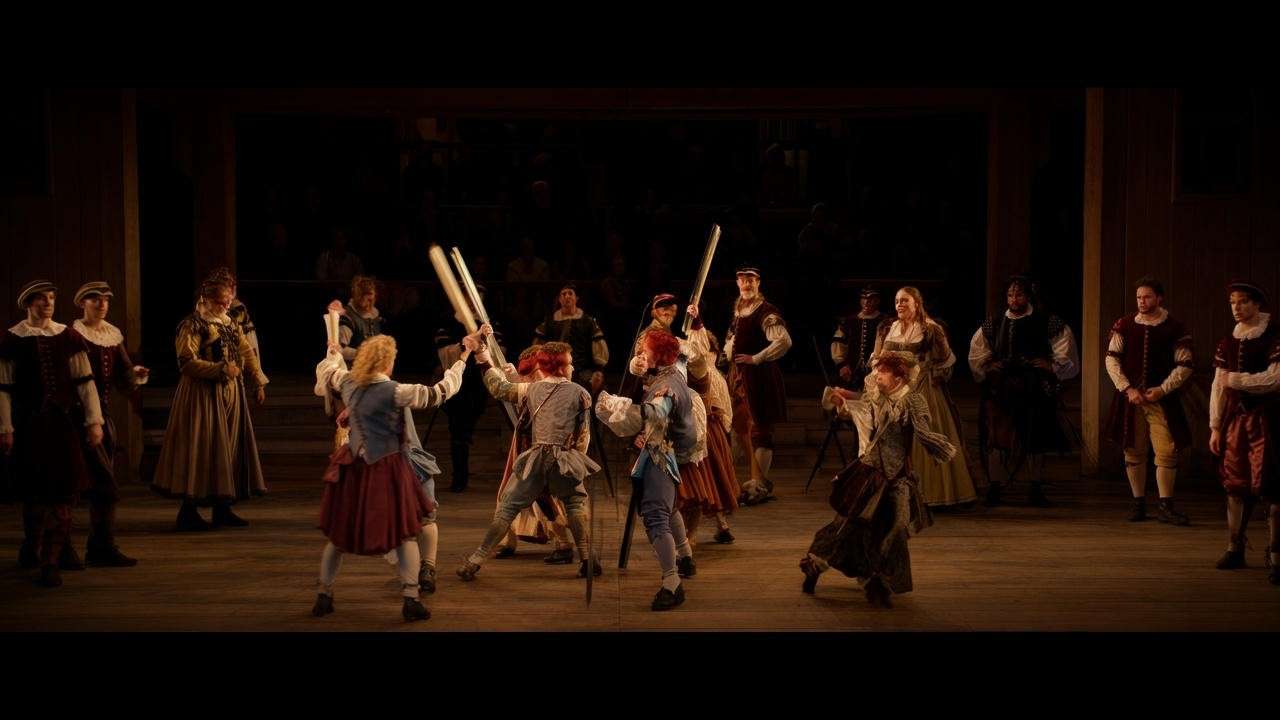
Notable Stage Productions
Since its debut at the Globe Theatre in 1599, Henry V has been a staple of stage performance, its rousing speeches and dynamic characters captivating audiences. The Royal Shakespeare Company (RSC) has produced numerous acclaimed renditions, with directors often emphasizing different facets of the play. For instance, a 2015 RSC production directed by Gregory Doran highlighted the gritty realities of war, using minimalist sets to focus on the soldiers’ experiences. Historically, the play’s patriotic tone resonated with Elizabethan audiences, and modern productions continue to explore its relevance, whether emphasizing leadership or critiquing imperialism.
Stage interpretations vary widely. Some directors lean into Henry’s heroism, while others, like Nicholas Hytner’s 2003 National Theatre production, underscore the play’s anti-war undertones, portraying Henry as a conflicted leader. These contrasting approaches showcase Henry V’s versatility, inviting audiences to grapple with its moral complexities. For theatergoers, attending a live performance—such as those by the RSC or Shakespeare’s Globe—offers a visceral connection to the play’s energy.
Film and Media Adaptations
Henry V has inspired iconic film adaptations, each reinterpreting the play for new audiences. Laurence Olivier’s 1944 film, made during World War II, is a patriotic rallying cry, with vibrant Technicolor visuals and an optimistic tone. Olivier’s Henry is a near-mythic hero, aligning with wartime propaganda needs. In contrast, Kenneth Branagh’s 1989 adaptation takes a grittier approach, emphasizing the mud and blood of Agincourt. Branagh’s raw delivery of the “St. Crispin’s Day” speech remains a benchmark for its emotional intensity.
More recently, Tom Hiddleston’s 2012 portrayal in the BBC’s The Hollow Crown series offers a introspective Henry, blending charisma with vulnerability. The 2019 film The King, starring Timothée Chalamet, takes a looser approach, adapting Henry V and the Henriad into a modernized narrative. While less faithful, it introduces the story to younger audiences. Each adaptation reflects its era’s values—Olivier’s patriotism, Branagh’s realism, Hiddleston’s nuance—demonstrating Henry V’s timeless adaptability.
Example: Compare Branagh’s muddy, rain-soaked Agincourt with Olivier’s polished battlefield. Branagh’s realism underscores war’s toll, while Olivier’s idealism elevates Henry’s heroism, offering distinct lenses for understanding the play.
Modern Relevance
Henry V remains a touchstone in contemporary culture, particularly in leadership training and political discourse. Corporate programs, such as those offered by the Movers & Shakespeares consultancy, use the play to teach leadership skills, drawing on Henry’s ability to inspire and unite. The “band of brothers” concept resonates in team-building exercises, while Henry’s strategic decisions inform discussions on crisis management.
In politics, the play’s themes of national unity and the ethics of power echo in modern debates. For instance, Henry’s navigation of diverse allies (Fluellen, Macmorris) parallels efforts to bridge cultural divides in globalized societies. Pop culture also embraces Henry V, with its speeches quoted in films, books, and motivational talks. A 2020 TED Talk by leadership coach Simon Sinek referenced Henry’s “St. Crispin’s Day” speech to illustrate the power of shared purpose, highlighting its enduring appeal.
Why Henry V Matters Today
Lessons for Modern Audiences
Henry V offers practical lessons for today’s readers and leaders. Henry’s ability to inspire through rhetoric—seen in speeches like “Once more unto the breach”—teaches the value of clear, motivational communication. His empathy, evident when he mingles with soldiers in disguise, underscores the importance of understanding team dynamics. Modern leaders can apply these principles by fostering inclusivity and articulating a compelling vision.
The play also prompts reflection on ethical leadership. Henry’s decision to execute prisoners at Agincourt raises questions about morality in high-stakes situations, relevant to today’s leaders navigating complex decisions. Practical Application: To emulate Henry, practice active listening with your team and deliver clear, purpose-driven messages during challenges, whether in business or community settings.
Educational Value
Henry V is a cornerstone of literature curricula, valued for its rich language and historical insights. For students, it offers opportunities to explore themes like leadership, identity, and morality. Educators can engage learners with discussion questions like: “How does Henry balance piety and pragmatism?” or “Does the play glorify or critique war?” The Folger Shakespeare Library provides resources, such as lesson plans and annotated texts, to support classroom study.
Resource: Below are sample discussion questions for students:
- How does Shakespeare use the Chorus to shape the audience’s perspective?
- What does Fluellen’s role reveal about cultural diversity in the play?
- How does Henry’s leadership style compare to modern leaders you admire?
For deeper engagement, students can analyze key scenes, such as Henry’s soliloquy on kingship, or perform excerpts to experience the text’s theatricality. A downloadable study guide from the Folger Shakespeare Library or Shakespeare’s Globe can further enrich learning.
FAQs About Henry V
- Question: What is the main message of Henry V?
- Answer: The play explores leadership, the costs of war, and national unity, portraying Henry as a complex figure balancing duty, morality, and ambition.
- Question: Is Henry V historically accurate?
- Answer: While rooted in historical events like the Battle of Agincourt, Shakespeare embellishes details for dramatic effect, such as the tennis balls incident, to enhance character and conflict.
- Question: Why is the “St. Crispin’s Day” speech so famous?
- Answer: Its powerful rhetoric, emphasizing camaraderie and heroism, inspires universally, making it a timeless call to action quoted in leadership and motivational contexts.
- Question: How does Henry V fit into Shakespeare’s history plays?
- Answer: As the final play in the Henriad tetralogy (Richard II, Henry IV Parts 1 and 2, Henry V), it completes Henry’s arc from reckless prince to heroic king.
- Question: What makes Henry V appealing to modern audiences?
- Answer: Its themes of leadership, unity, and moral complexity resonate in today’s political, corporate, and social landscapes, amplified by its universal human insights.
Henry V is more than a historical drama—it’s a profound exploration of leadership, war, and identity that speaks to audiences across centuries. From its historical roots in the Hundred Years’ War to its stirring speeches and complex characters, the play offers timeless lessons. Whether you’re inspired by Henry’s “band of brothers” ethos, moved by the soldiers’ humanity, or intrigued by Shakespeare’s linguistic genius, Henry V invites deep reflection. Watch a performance, read the text, or apply its leadership insights to your life. As the Folger Shakespeare Library notes, “Shakespeare’s histories are mirrors of our own struggles.” Let Henry V inspire you to lead, unite, and question the world around you.

